Soufli, Greece – 3/2014
Not to bore you with a history or biology lesson, but you might be interested in the fascinating drama of what silk is all about. If you don’t read any further, ponder this: Just one ounce of silkworm eggs contains 40,000 eggs (1,500 eggs per gram). The worms from those eggs will eat 3,500 pounds, (1,500 kilograms), of mulberry leaves, and will spin cocoons, which will produce 18 pounds, (8 kilograms), of silk thread. It takes 1,700 to 2,000 cocoons to make one silk dress!
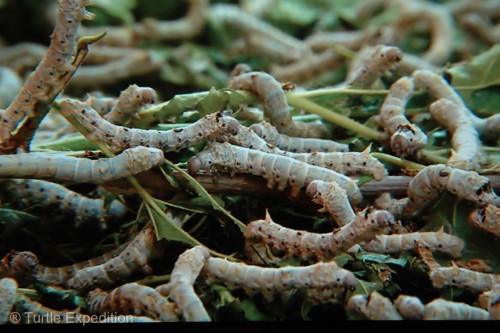
The growing silkworms have a voracious appetite for mulberry leaves which must be harvested daily by those who work in the sericulture industry.
As we continued east following the braided web of “The Silk Road”, we had a lot to learn and discover about this magical material. The production of silk originated in China in the 4th millennium BC. According to the writings of Confucius, 551-479 BC, sometime around 3000 BC a silkworm’s cocoon fell into the teacup of the empress Hsi-Ling-Shih. Wishing to extract it from her drink, the 14-year-old girl began to unroll the thread of the cocoon. She then had the idea to weave it. Having observed the life of the silkworm, on the recommendation of her husband, the Yellow Emperor, she began to instruct her entourage in the art of raising silkworms, (sericulture). The empress was later worshipped by Chinese people as the “Goddess of Silkworms”.
Numerous archaeological discoveries show that silk had become a luxury material appreciated in foreign countries well before the opening of the Silk Road by the Chinese. For example, silk has been found in the Egyptian Valley of the Kings in a tomb of a mummy dating from 1070 BC. First the Greeks, then the Romans began to speak about the Seres, (people of silk), a term to designate the inhabitants of a far-off kingdom, China. The Greek word gave rise to Latin sericum und ultimately Old English, silo, and Middle English silk. Though silk was exported in great amounts, sericulture remained a secret that the Chinese carefully guarded.
According to Chinese mythology, the secret eventually escaped China (probably in the early 1st century AD) when a princess who was promised to a prince of Khotan, an ancient Buddhist kingdom located on the branch of the Silk Road that ran along the southern edge of the Taklamakan Desert refused to go without the fabric she loved. The Taklamakan is a vast sea of sand that we will cross in the coming months. In Chinese, Taklamakan means, “If you go in, you won’t come out.” It is one of the most arid places on earth.
The Roman appetite for silk cloth coming from the Far East was rapidly expanding, so much so that the Senate tried in vain to prohibit the wearing of silk, for economic reasons as well as moral ones. Silk clothing was perceived as a sign of decadence and immorality. To quote one Roman Senator:
“I can see clothes of silk, but if the materials do not hide the body nor even one’s decency, can it be called clothing?”—“ Wretched flocks of maids labor so that the adulteress may be visible through her thin dress, so that her husband has no more acquaintance than any outsider or foreigner with his wife’s body.”
The Byzantine Empire was the continuation of the Roman Empire in the Greek-speaking eastern part of the Mediterranean. They did not possess the secret of sericulture, i.e. how silkworms are reared, how they spin their cocoon and how, from these to produce a continuous silk thread. In 552 AD, the emperor Justinian sent two Nestorian monks to India and they were able to smuggle back silkworm eggs hidden in rods of bamboo, and so began silkworm cultivation in the West.
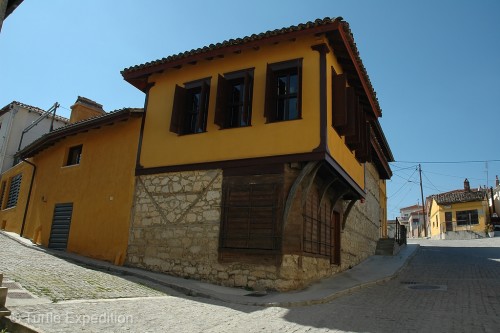
The Piraeus Bank Group Cultural Foundation has received the European Union Prize for Cultural Heritage, the Europa Nostra Award 2012, for its excellent museums among them the old Silk Museum in Soufli, Greece. The mansion was built in 1883 for the Kourtidis family.
There had been plenty of silk in markets along our tortuous route, but we had been looking forward to the town of Soufli, known as The Town of Silk, where that industry flourished in the 19th and early 20th centuries. The old Silk Museum, sponsored by Piraeus Bank Group Cultural Foundation, was a fabulous education. The new Art of Silk Museum belonging to the Tsiakiris Family, just around the corner, was equally interesting with displays of the full sequence of sericulture, (with live silkworms on show most of the year), and fully functional machinery and exhibits from the Tsiakiris factory.
From the beginning, the flightless female moth rests on a mulberry leaf. The male is more active. He flaps his wings rapidly to attract a female, fertilizes the eggs and dies. The female deposits up to 500 eggs on the leaf and dies within days. Sounds like pretty boring sex huh? The silkworm egg or seed as it is called is about the size of a pinhead.
(We thank the new Art of Silk Museum for this very informative note of clarification:
The romantic life of the Mulberry Silkworm (Bombyx mori) is lost in the mists of time. The Chinese started cultivating these beasties 4500-5000 years ago, that’s a heck of a long time to be under our thumbs. Consequently, the silkworm has been transformed by our requirements for more and more silk into a creature with little resemblance to its wild progenitors.
There are no “wild” mulberry silkworms any more although some of its relatives are used to produce silk of differing qualities and appearances. If we stopped producing mulberry silk this animal would go extinct in very short order – they are totally reliant on humans for their survival.
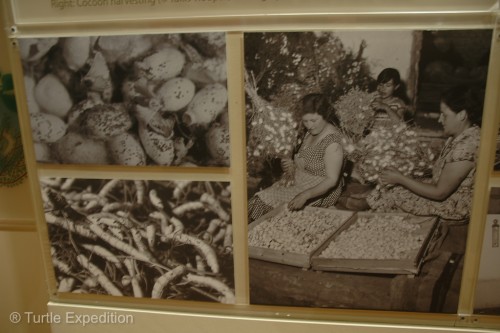 In a silk worm production facility, the moths never get near a mulberry leaf. The whole of their life cycle is completely governed by the grower’s convenience and mulberry leaves at that stage are most inconvenient. The caterpillars are given small twiggy branches to make their cocoons – scrub oak, erica, pine, etc. – in the East, they have wonderful woven baskets with concentric rings for this – but the eggs are far too precious to let the females lay them willy-nilly. Cocoons selected for egg production would have been separated and placed in carefully controlled environments (sometimes sewn together onto large “Hatching Frames”). The moths on hatching are paired and then the females are separated and placed in an individual paper or muslin bag to lay their eggs and expire. Both male and female moths can last up to 10 days but 3-5 days is more likely. It’s a bit miserable really, just hanging round to slowly die of starvation.)
In a silk worm production facility, the moths never get near a mulberry leaf. The whole of their life cycle is completely governed by the grower’s convenience and mulberry leaves at that stage are most inconvenient. The caterpillars are given small twiggy branches to make their cocoons – scrub oak, erica, pine, etc. – in the East, they have wonderful woven baskets with concentric rings for this – but the eggs are far too precious to let the females lay them willy-nilly. Cocoons selected for egg production would have been separated and placed in carefully controlled environments (sometimes sewn together onto large “Hatching Frames”). The moths on hatching are paired and then the females are separated and placed in an individual paper or muslin bag to lay their eggs and expire. Both male and female moths can last up to 10 days but 3-5 days is more likely. It’s a bit miserable really, just hanging round to slowly die of starvation.)
The eggs require warmth and humidity. In the olden days, women would place them in a kerchief next to their bosom. In the 40’s, incubators were introduced. As the egg slowly turns into a silkworm or caterpillar it needs food, lots of it, and it only eats fresh leaves from the mulberry tree. From May through June, the worm or caterpillar goes through five growing ecdysis or molts, four while growing and the fifth to become a chrysalis inside the cocoon. In Soufli, they call the time while the caterpillars are molting “sleeps” as they stand motionless until they split the skin and squirm out, and the caterpillars are categorized into “ages” (1st age from hatching to 1st moult, 2nd age from 1st moult to 2nd moult, etc).
As the caterpillar grows, increasing its size 10,000 times since birth to reach full size, it stops eating and begins to spin a cocoon around itself using a figure 8 motion of its head and producing a juice from its mouth. A continuous silk thread can reach a length of 1,200 m (1000 yards), (ten football fields), long and a thickness of 20–30 micrometers.
If left alone inside its finished cocoon, the caterpillar (silkworm) magically turns into a moth. When the moth reaches adult size, it will chew its way out of the cocoon, but this breaks the strand of silk. In sericulture, the moth is killed inside the cocoon with heat or steam. The cocoon is then placed in hot water and master craftswomen find the end of the silk strand and combining three or more together, wind them onto a bobbin from where they move to the dying and weaving stage.
OK, enough about silk for the moment. We need to fill our water tanks and move on to Turkey to look for a campsite in Istanbul. Where to find water in a small village? The fire station of course!
- Silkworm cocoons feel like little puffballs of cotton. Each one may contain up to 1000 feet of silk thread.
- This dry branch of a mulberry tree still holds several cocoons.
- Seen here in an incubator tray, the silkworm eggs are the size of a pinhead.
- Just one ounce of silkworm “seeds” contains 40,000 eggs.
- Ironically, most are imported from China today.
- As the eggs grow into baby silkworms, their appetite for mulberry leaves increases rapidly.
- By maturity, the caterpillars of 40,000 eggs will eat 3,500 pounds, (1500 kilograms), of mulberry leaves.
- From time to time, the silkworm caterpillar stops eating and seems to sleep.
- As the caterpillar grows, increasing its size some 10,000%, it turns white and sheds its skin three times. They breathe through the black spots on their sides.
- The silkworm moth is killed inside the cocoon with heat or steam before it has a chance to chew its way out, breaking the delicate silk strand.
- The old looms in the new Art of Silk Museum in the town of Soufli were beautifully displayed.
- A silk ensemble like this one in the Soufli old Silk Museum may use the silk from many thousand cocoons.
- Hand loomed creations like this delicate shawl in the new Art of Silk Museum store were more costly that gold in Roman times.
- The new Art of Silk Museum store and museum had some wonderful examples for sale.
- Built in 1886 when silk was king in Soufli, the house of the Tsiakiris Family is now a wonderful museum.
- The best place in town to get water was the local fire station.
- We had a great time chatting with the crew who offered us hot coffee while we filled all our water cans and main tank before crossing into Turkey.



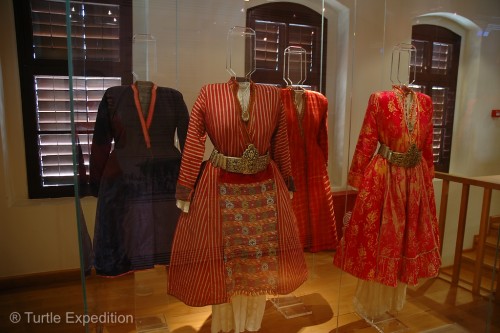
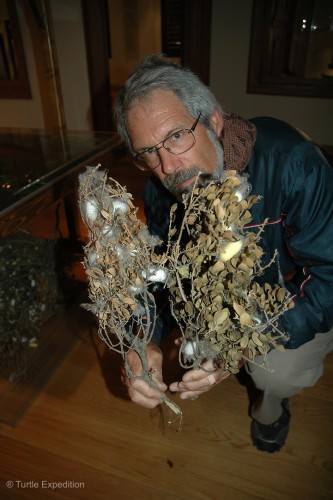
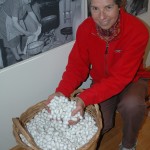
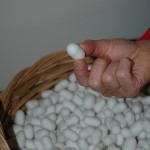
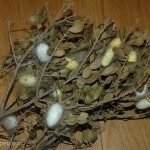
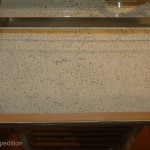
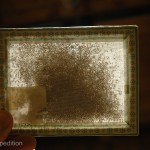
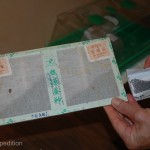
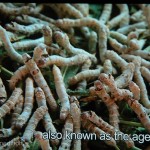
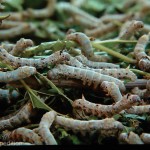
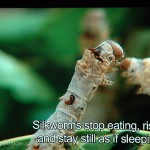

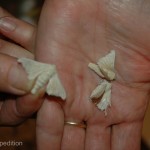
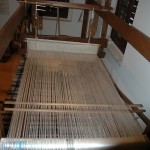
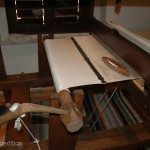
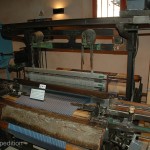
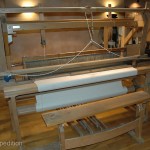

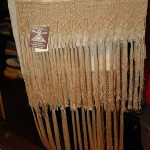

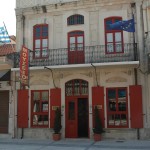







José Conde liked this on Facebook.
Mark Podolskiy liked this on Facebook.
Tammie Witt Larsson liked this on Facebook.
RT @TurtleExp: Not to bore you with a history or biology lesson, but you might be interested in the fascinating drama https://t.co/5f2tcoq…
Anthony Fix liked this on Facebook.
David Croyle liked this on Facebook.
Bonnie St James liked this on Facebook.
Thanks for sharing. Another place to add to the agenda.
Rankin Jeffries liked this on Facebook.
Benjamin Meddows liked this on Facebook.
Ildo Costa Nunes liked this on Facebook.
Ben Kinser liked this on Facebook.
Thomas Woodson liked this on Facebook.
Saw some silk production places in Myanmar! It’s amazing.
Ken Freund liked this on Facebook.
Kari Yamane liked this on Facebook.
Martine Cos liked this on Facebook.
Henry Green liked this on Facebook.
Suélyn Koslinsky liked this on Facebook.
Jeff Paddock liked this on Facebook.
Hello there,
Glad to see you’re still rattling along out there. Thank you for you article on Soufli. We were very pleased that you came to visit us at the Art of Silk Museum and have kept a watch on your wanderings since. Just one thing, your spell checker seems to be working overtime and has transformed the family name of TSIAKIRIS into “Stickers”. Mr Tsiakiris was much mystified by this until I explained it to him!
Keep on rollin’.
Hello again,
There is still one “Stickers” lurking there on the caption to the photo of the museum front view. If you get the chance it would be nice if you could fix it!
Thanks.
Art of Silk Museum, Soufli